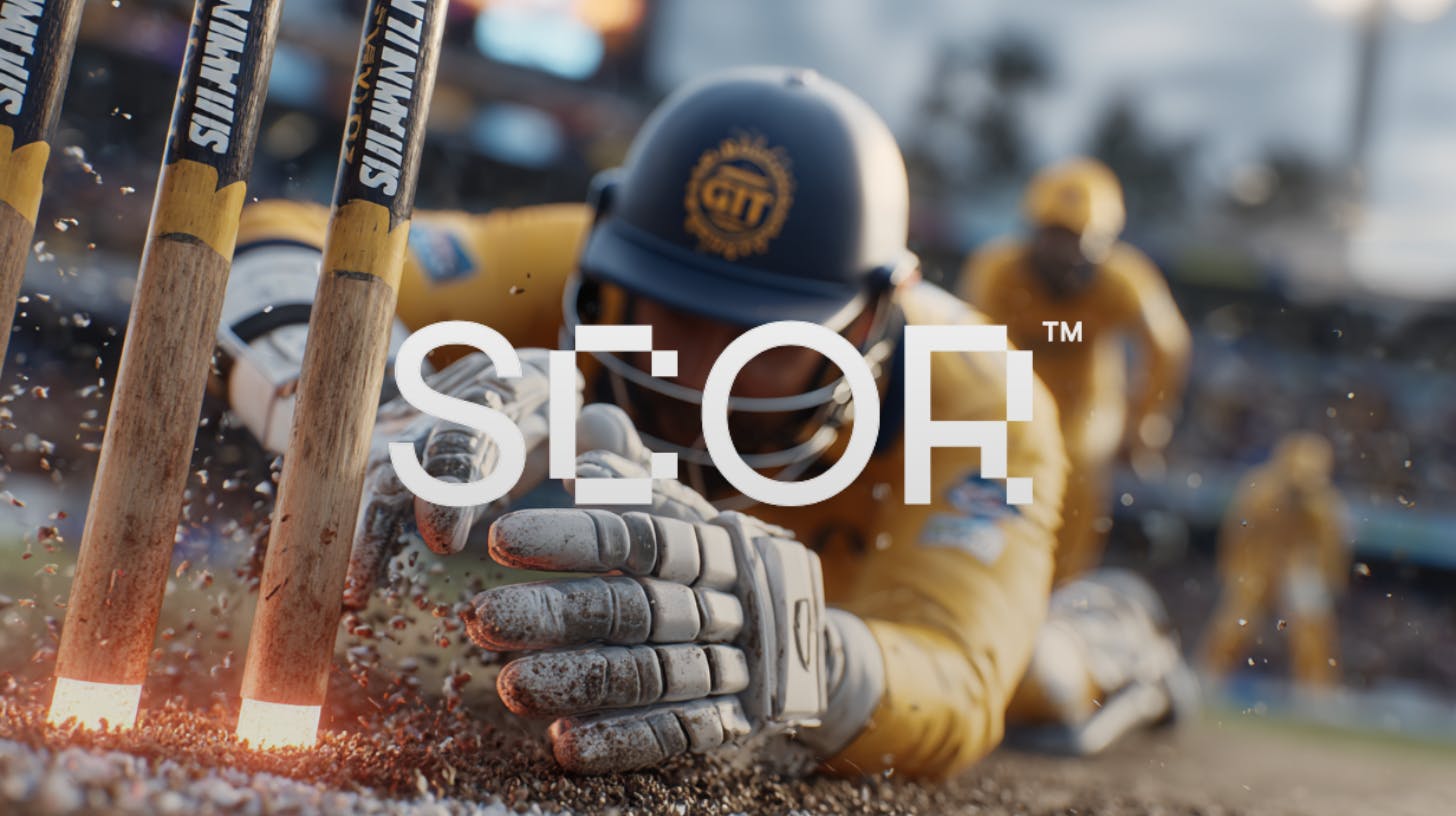How SCOR Turned Cricket Stars Into Playable Assets on Telegram
What if your favorite athlete’s signature move could give you an edge in a game? Not just as inspiration, but as a tangible advantage that helps you win rewards. That concept, once confined to fantasy gaming platforms or complex NFT ecosystems, is now arriving on Telegram through SCOR’s partnership with the TON Foundation’s newly launched Fuse Sticker Store.
On October 17, cricket fans will be able to purchase animated sticker packs featuring players like Rashid Khan, Sunil Narine, Adil Rashid, Ish Sodhi, and Tabraiz Shamsi. But these are not ordinary stickers. Each pack, priced at $4.99, contains five animated athlete stickers that function as power-ups within SCOR’s skill-based mini-games. The concept bridges casual social media behavior with competitive gaming and introduces a model where sports intellectual property becomes a functional asset rather than just memorabilia.
What Makes This Different From Traditional Digital Collectibles?
Digital sports collectibles have existed for years, from NBA Top Shot to various fan token initiatives. Most follow a familiar pattern: fans buy, hold, and occasionally trade. The value proposition remains largely speculative or sentimental. SCOR’s approach adds a layer of utility that ties directly to gameplay outcomes.
When a fan purchases a sticker pack in the SCOR Sticker Store, they gain access to power-ups that provide competitive advantages in mini-games like Sixer Smash. These advantages translate into higher scores, better leaderboard positions, and increased accumulation of Gems, the in-game currency. Gems can be committed weekly during the SCOR Invitational, which serves as a pre-launch competition ahead of the $SCOR token generation event. This creates a pathway where a $4.99 purchase potentially influences long-term positioning within a broader rewards ecosystem.
The integration happens entirely within Telegram, a platform with over 900 million monthly active users according to recent estimates. Users do not need to navigate external wallets, separate marketplaces, or unfamiliar blockchain interfaces. The stickers live where fans already communicate, making the barrier to entry significantly lower than previous blockchain-based sports collectible initiatives.
Why Cricket Players and Why Now?
The inaugural launch focuses on cricket spin bowlers, a deliberate choice given cricket’s massive global following and the sport’s growing digital engagement. Cricket commands viewership numbers that rival any global sport, with the International Cricket Council reporting over 1 billion viewers for major tournaments. Yet cricket has lagged behind soccer and basketball in digital monetization strategies for individual athletes.
Winners Alliance, the organization representing thousands of athletes across cricket, tennis, track, basketball, and college football, facilitated SCOR’s partnership with these players. This group licensing model allows SCOR to aggregate athlete IP at scale rather than negotiating individual deals. For athletes, this represents a new revenue stream that does not depend on traditional sponsorship structures or league-controlled media rights.
The choice to launch with spin bowlers rather than batsmen or fast bowlers reflects SCOR’s attention to personality-driven marketing. Rashid Khan’s helicopter spin celebration and Tabraiz Shamsi’s shoe-phone gesture are visually distinctive moments that translate well into animated stickers. These celebrations already circulate widely as GIFs and memes across social platforms, giving them built-in recognition value.
The Economics Behind Limited Supply
SCOR has capped each sticker pack edition at 1,000 units. Additionally, the top 200 players on the all-time Sixer Smash leaderboard as of October 10 receive reserved packs with early minting access before the public sale window opens. This scarcity mechanism follows established practices from sneaker drops and limited-edition collectible releases, creating urgency and potential secondary market demand.
However, the limited supply raises questions about accessibility versus exclusivity. If the stickers provide meaningful gameplay advantages and only 1,000 packs exist per athlete edition, the majority of SCOR’s user base will not have access. This could create a tiered competitive environment where early adopters and top performers maintain structural advantages over new players. Whether SCOR plans future releases, expanded editions, or alternative paths to obtaining power-ups remains unclear from the announcement.
The $4.99 price point sits below typical NFT sports collectibles but above standard Telegram sticker packs, which often cost between $0.99 and $2.99. The pricing suggests SCOR is positioning these as premium products rather than mass-market items, targeting engaged fans willing to spend for competitive advantages rather than casual collectors.
What TON Foundation Gains From This Partnership
Max Crown, CEO at TON Foundation, explains the launch as making Telegram
“the go-to destination for sports-themed digital experiences.”
For TON, this partnership represents a practical application of blockchain technology that bypasses the typical crypto user experience friction. Telegram Stars, TON’s in-app currency, provides the payment infrastructure, while the TON blockchain handles the underlying asset ownership and transfer mechanics.
The timing coincides with TON’s broader push to establish Telegram as a Web3 platform without requiring users to understand Web3. Previous initiatives have focused on gaming and mini-apps, but sports IP introduces a content category with proven mass appeal and existing monetization models. If SCOR’s launch succeeds, it could establish a template for other sports properties, leagues, or athlete groups to follow.
For TON, the success metric extends beyond immediate sales. The foundation wants to demonstrate that blockchain-based assets can enhance rather than complicate user experiences on platforms people already use daily. Whether that vision materializes depends on execution, user adoption, and whether the gameplay advantages justify the purchase price.
The Broader Context of Sports IP on Blockchain
SCOR positions itself as building “programmable infrastructure for fandom,” a concept that goes beyond individual product launches. The sticker packs represent one component of a system that includes athlete NFTs, the SCOR-ID identity platform, tournaments, and the upcoming $SCOR token.
This approach contrasts with fan tokens launched by soccer clubs through platforms like Socios, which primarily offered voting rights on minor club decisions and speculative trading opportunities. Many of those tokens saw initial excitement followed by declining engagement and value. SCOR’s model attempts to create continuous utility through gameplay integration rather than one-time voting mechanisms.
The success of this model depends on several factors: whether the mini-games maintain long-term player engagement, whether the advantages provided by sticker packs feel meaningful but not pay-to-win, and whether the $SCOR token economics create sustainable value for participants. The announcement provides limited detail on tokenomics, distribution, or how Gems convert to token allocations.
Challenges and Open Questions
Several aspects of this launch warrant scrutiny. The competitive advantage provided by sticker packs could alienate players who prefer skill-based progression without financial barriers. Gaming communities have historically resisted pay-to-win mechanics, and SCOR must balance monetization with fair play perceptions.
The reliance on Telegram as the primary platform creates concentration risk. While Telegram’s user base is substantial, the platform faces regulatory challenges in various markets and has experienced access restrictions. Building an entire ecosystem around a single platform’s infrastructure limits flexibility and introduces dependencies outside SCOR’s control. Additionally, the focus on cricket players, while strategic for initial launch, may limit appeal in markets where cricket has minimal following. Expanding to other sports will require new athlete partnerships, additional IP negotiations, and potentially different gameplay mechanics suited to different sports’ characteristics.
The Winners Alliance partnership addresses some of these scaling challenges by providing access to thousands of athletes across multiple sports. However, the announcement does not clarify how quickly SCOR plans to expand beyond cricket or which sports come next.
Final Thoughts
SCOR’s Fuse Sticker Store launch represents an evolution in how sports IP might function in digital environments. By embedding competitive utility into collectible assets and distributing them through a platform with massive existing reach, the project sidesteps many barriers that have limited previous sports blockchain initiatives.
The focus on gameplay integration rather than speculative trading shows learning from earlier fan token experiments. The partnership structure with Winners Alliance provides a scalable model for athlete IP aggregation. The choice to build on Telegram via TON removes technical friction that has prevented mainstream adoption of blockchain-based sports products.
Yet questions remain about long-term sustainability, competitive balance, platform dependency, and whether the model can expand beyond its initial cricket focus. The October 17 launch will provide early signals about demand, but meaningful evaluation requires months of data on player retention, secondary market activity, token launch execution, and whether additional sports properties adopt similar approaches.
If this succeeds, it could reshape how athletes monetize their brands outside traditional sponsorship structures and how fans engage with sports IP. If it struggles, it may reinforce skepticism about blockchain’s ability to add value beyond speculation in sports contexts. The next few months will be telling.
Don’t forget to like and share the story!
:::tip
This author is an independent contributor publishing via our business blogging program. HackerNoon has reviewed the report for quality, but the claims herein belong to the author. #DYO
:::










